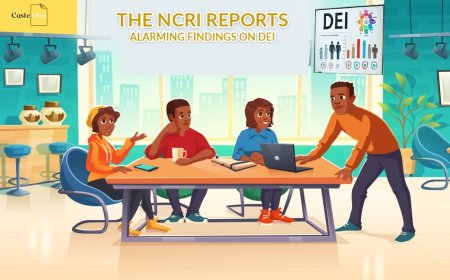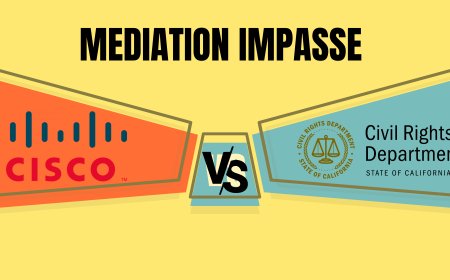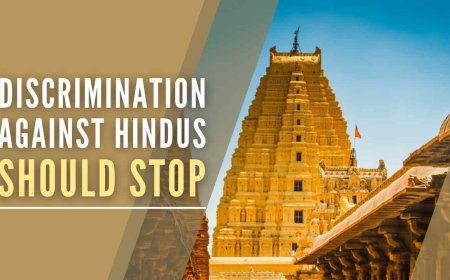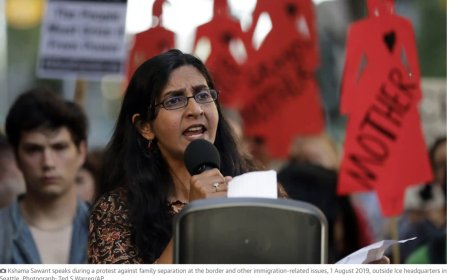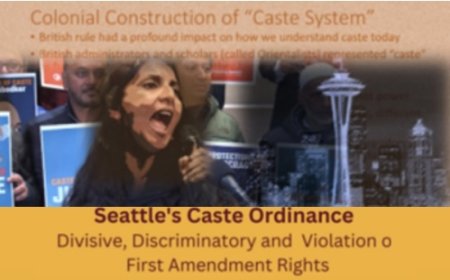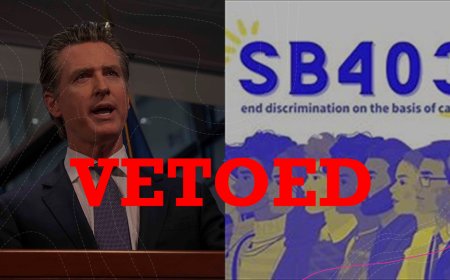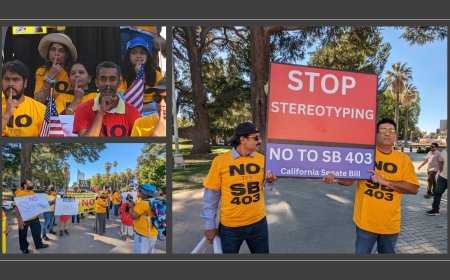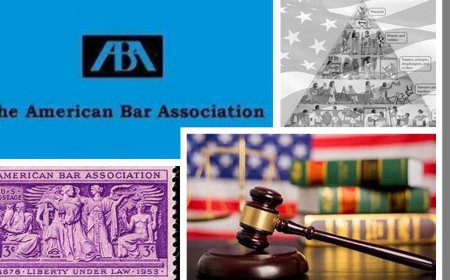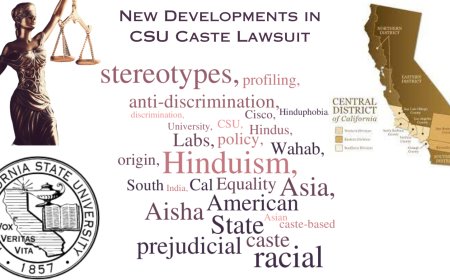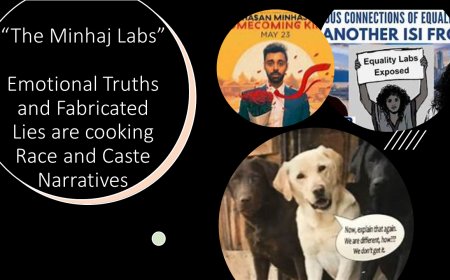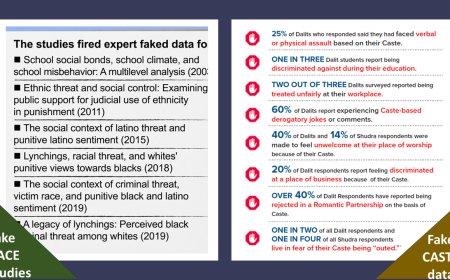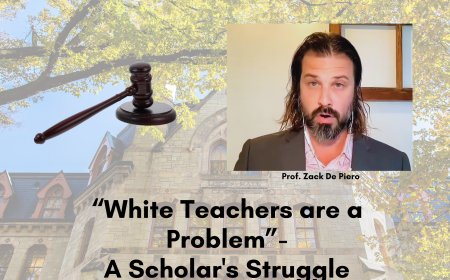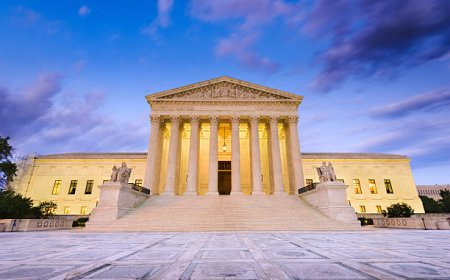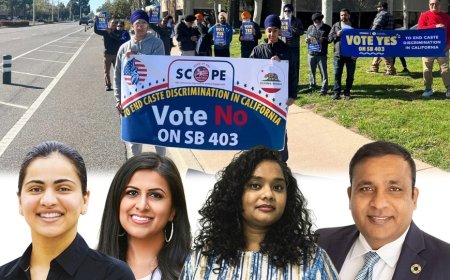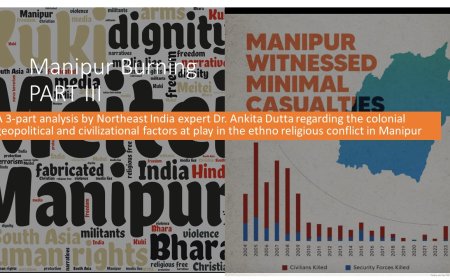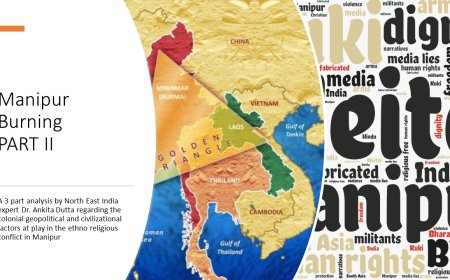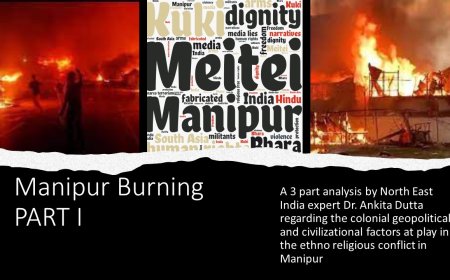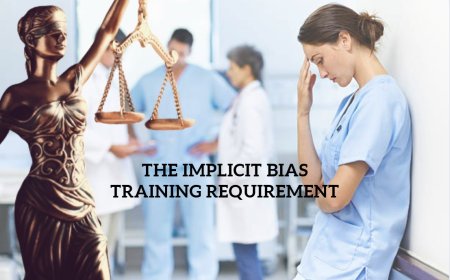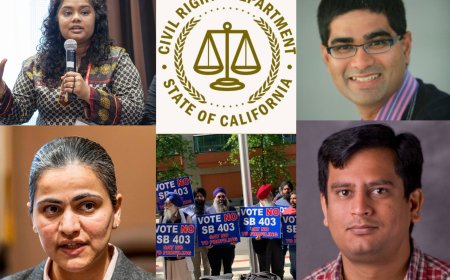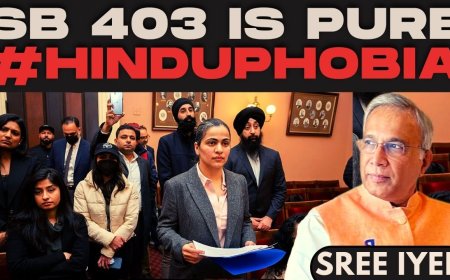American Bar Association's Resolution 513 Exposes True Intent of SB403 to Profile Indian Americans
Under pressure from advocacy groups, SB403 has been dressed in neutral shades. But the true intent is exposed when lobbyists and support groups like ABA, CRD, and Equality Labs fuel SB403 with resolutions and surveys that profile Indian Americans

The American Bar Association (ABA) has recently gained notoriety for its adoption of House of Delegates Resolution 513, which adds caste as a protected category against discrimination.
ABA Overreach Results in Rescinded Proposal
Exactly one year prior to the enactment of Resolution 513, on August 8, 2022, the ABA made another infamous decision to withdraw a contentious proposal. This proposal sought to mandate law schools to enhance diversity within their student bodies. However, it faced substantial opposition from law professors who argued that it would potentially compel schools to engage in racial discrimination, thus conflicting with federal laws. The proposal entailed annual reporting on minority enrollment by law schools, with potential accreditation consequences for those failing to meet specified diversity targets. The House of Delegates rescinded this "Diversity" proposal after undergoing three rounds of revisions.
This “Diversity” proposal was met with criticism from numerous legal professionals, including those affiliated with esteemed institutions. In June 2021, ten professors from Yale Law School publicly expressed their apprehensions, emphasizing the risk of schools violating state or federal laws to maintain their certification. By February 2022, law professors continued to voice "legal concerns" about the potential adoption of racial balancing or quotas, as indicated in an ABA memo summarizing the feedback received. Initially, the ABA defended the proposal, arguing that it was essential to promote diversity within the legal profession. However, in response to mounting criticism, the organization eventually reversed its stance. In an official statement, the ABA acknowledged that it had carefully considered the feedback and concluded that the proposal "was not the most effective means to achieve our objective of enhancing diversity in the legal profession."
Déjà Vu All Over Again - 'Woke' Resolution 513
Fast forward to August 2023, one year later, when the ABA introduced another policy that has sparked controversy for its perceived discriminatory and unconstitutional nature. This policy includes the term "caste" in Resolution 513. It's important to note that Americans are typically educated, from elementary school onwards, about caste as an ancient hierarchical system practiced by Hindus in India, often erroneously associated with Hinduism. A survey conducted in March 2023 by the Coalition of Hindus of North America (CoHNA) has confirmed that many Americans equate caste with Hinduism, highlighting the potential for misunderstanding and misinterpretation. For the majority of Americans, the term "caste" is closely linked to India and, by extension, Hinduism. The American Bar Association's (ABA) assertion that "caste" is a global phenomenon has faced criticism for what's perceived as an attempt to obfuscate the fact that using "caste" in a legal context can potentially lead to the stigmatization and stereotyping of specific groups, notably Hindu-Americans. Despite referring to "other caste oppressed communities" in Resolution 513, which spans 19 pages, no concrete examples of such communities beyond Hinduism, India, and South Asia are provided.
In the United States, terms like race, gender, and sexual orientation discrimination are widely understood, whereas the term "caste" remains relatively unfamiliar. ABA's Resolution 513 has been faulted for its alleged unconstitutionally vague nature due to its failure to provide a precise definition of "caste." Additionally, it has been accused of potentially violating the Equal Protection Clause by treating American citizens who adhere to the Hindu religion, as well as those from India and South Asia, differently from others. The lack of clarity regarding "caste" within the resolution raises concerns about lawmakers' understanding, which in turn makes it unlikely that the common American will grasp the meaning of caste and caste discrimination. Merely characterizing caste as a "hierarchy" and identifying "caste systems" in India and South Asia falls short of delivering a clear definition of these concepts within the context of ABA Resolution 513.
Literary Devices and Devious Resolution 513
ABA's Resolution 513 references the Merriam-Webster dictionary, but the dictionary's primary definition of "caste" explicitly ties it to "one of the hereditary social classes in Hinduism that restricts the occupation and association of its members with members of other castes." This definition establishes an association between caste and a specific religion, contrary to the ABA's argument. It's worth noting that no court has ever endorsed an anti-discrimination law that targets an alleged group of discriminators rather than protecting a group that has experienced discrimination. The mere mention of "caste" without a clear definition of the prohibited conduct falls short, especially given the significant First Amendment concerns raised by the ordinance.
Furthermore, the frequent use of the term "Dalit" in Resolution 513 (appearing over 41 times) is another point of concern regarding the targeting of Hindu Americans. The ABA relies on the Merriam-Webster Dictionary to define "Dalit" as "a member of the lowest class in the traditional Hindu social hierarchy, believed to defile by contact with a member of a higher caste." Notably, the word "Hindu" and its variants are mentioned 17 times in Resolution 513. Despite the ABA's claim that "caste" is a global phenomenon transcending religion and geography, Resolution 513 lacks examples of other "caste systems" beyond India and South Asia. Furthermore, it fails to provide instances of caste discrimination in religions other than Hinduism. Resolution 513 specifically discusses "Dalits," a term that, according to the ABA's own definition, solely applies to the "Hindu Caste System." This is contradictory to the ABA's assertion that caste is a global phenomenon existing in diverse cultures and continents, each with different caste classifications, hierarchies, and nomenclatures distinct from "Hindu" and "Dalit." Yet, as previously noted, ABA Resolution 513's 19-page document does not furnish a single example of another caste system, caste-oppressed communities, or equivalents to "Hindu" and "Dalit" in other cultures or religions, such as Christianity, Islam, or Judaism, or on other continents like Africa, South America, or Europe.
The American Bar Association (ABA) has been criticized for its resolution 513, which includes the terms "caste" and "Dalit." Critics argue that the resolution is discriminatory against Hindu Americans and that it targets them as inherently discriminatory. They also argue that the resolution could lead to discrimination against Hindu Americans in the workplace and in educational institutions.
Here are some of the specific arguments that have been made against resolution 513:
-
The resolution singles out Hindu Americans for special monitoring and regulation.
-
The resolution uses the term "caste," which is a religiously and racially charged term.
-
The resolution could lead to discrimination against Hindu Americans in the workplace and in educational institutions.
-
The resolution is unnecessary because there are already laws in place that prohibit discrimination based on caste.
ABA's Resolution 513 profiles Hindu Americans.
The academic and media communities frequently reinforce specific stereotypes through their narratives. One illustrative example is their tendency to concentrate primarily on Hinduism in India when discussing caste systems, neglecting similar systems in other cultures like the Burakumin caste in Japan or the Gob nobility in Somalia. This narrow focus can result in misconceptions and misrepresentations of Hinduism. This was evident in the case of a Hindu American student from California who believed that his religion was misrepresented in California's History textbooks. He described how his religion was depicted as "a religion characterized by monkey and elephant gods, strict caste discrimination, and the oppression of women." This portrayal left him feeling angry, embarrassed and humiliated.
The Carnegie Endowment for International Peace conducted a scientific survey on Indian Americans, dated June 9, 2021. This organization is recognized for its neutrality, impartiality, and objectivity. It stands as the sole authoritative survey exploring the social experiences of Indian Americans, particularly in relation to caste identities and caste discrimination. The study's findings highlight that while discrimination based on gender, religion, color, and national origin is frequently reported, instances of discrimination linked to caste are exceedingly rare.
The 2020 caste study by the Carnegie Endowment for International Peace reveals four significant findings regarding the presence of caste in America:
A) Approximately half of the Indian Americans surveyed reported experiencing alleged discrimination. The reported bases for this alleged discrimination were color (30%), gender (18%), religion (18%), and national origin (1%).
B) A mere 5% of those surveyed reported encountering alleged discrimination based on caste. Notably, nearly half of these respondents identified the alleged discriminators as non-Indian, suggesting that caste may have been conflated with some other factor or criterion.
C) A majority of Hindu respondents (53%) do not associate themselves with any specific caste group.
D) Among those who do identify with a caste, a significantly lower proportion of US-born Hindu Indian Americans (34%) identify with a caste group compared to their foreign-born counterparts (53%). This observation suggests that caste identification becomes progressively less significant with each successive generation.
In summary, contrary to claims of “rampant” caste discrimination, the scientific survey from Carnegie, emphatically states that only 5-6% of Indian Americans experienced caste discrimination in the US, and out of those, only 1/3 said that other Indian Americans discriminated against them, meaning that only 2% Indian Americans faced caste discrimination from other Indian Americans. The debate over resolution 513 is likely to continue. It is important to have a respectful and informed discussion about this issue so that we can better understand the potential consequences of the resolution and make informed decisions about it.

